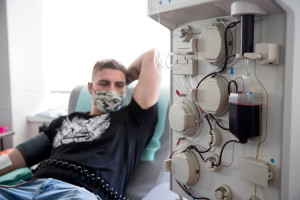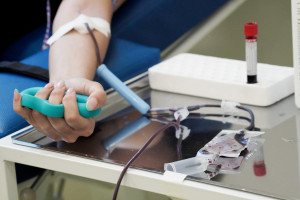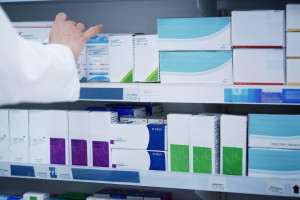New data on nusinersen, a drug for spinal muscular atrophy (SMA)

- Biogen Inc. (Nasdaq: BIIB) Announces New Data Supporting the Clinical Efficacy of nusinersen in a Diverse Population of Patients with Spinal Muscular Atrophy (SMA)
- New analyses from Part C of the DEVOTE clinical trial further characterize improvements in motor function in participants with SMA who switched from a 12 mg dose of nusinersen to a higher-dose regimen
- Final results from the landmark NURTURE study highlight the significant impact of early treatment with nusinersen 12 mg in children with clinically presymptomatic SMA, with 92% achieving independent walking
- - The new data on nusinersen demonstrate Biogen's commitment to developing clinical trials aimed at improving SMA treatment outcomes - the company emphasizes in a press release.
The latest results from Part C of the DEVOTE clinical trial, which evaluated a higher-dose regimen of nusinersen , and from the NURTURE clinical trial, which evaluated the approved 12 mg regimen of nusinersen in patients with presymptomatic SMA , were presented at the SMA Research & Clinical Care Meeting, hosted by Cure SMA in Anaheim, California.
Biogen's applications for approval of the higher-dose nusinersen regimen are currently under review in the United States, Europe, Japan, and other global markets. The higher-dose nusinersen regimen involves faster loading doses—two 50 mg doses 14 days apart—and higher maintenance doses—28 mg every four months.
"As the landscape of SMA therapies continues to evolve, we remain committed to truly addressing the unmet needs of this community. The results of Part C of the DEVOTE study further strengthen the evidence supporting the potential benefits of a higher dose of nusinersen," said Stephanie Fradette , PhD, PharmD and Director of Drug Development for Neuromuscular Diseases at Biogen.
Improvement observed in the population of patients already treated with the higher dose regimen of nusinersenDetailed results from Part C of the DEVOTE study highlight the potential clinical benefit of the higher dose of nusinersen studied in a large group of people (n=38) who had previously been treated with nusinersen at the approved dose of 12 mg for approximately four years (median: 3.9 years). Participants ranged in age from 4 to 65 years, and half of them (n=19) were ambulatory. In Part C of the study (open-label, higher-dose study), participants received one loading dose (50 mg) and two maintenance doses (28 mg each) of nusinersen.
After switching to the higher-dose regimen, most participants experienced improvements in the Hammersmith Extended Motor Scale (HFMSE), the Revised Upper Limb Assessment Module (RULM), and/or the Clinical Global Impression - Change (CGI-C; as assessed by the investigator or caregiver). These improvements were observed across all phenotypes, functional statuses, and age groups. For example, non-ambulatory participants experienced a mean improvement of +2.5 (95% CI: 0.49, 4.56) on the HFMSE, and ambulatory participants achieved an improvement of +1.1 (95% CI: -0.68, 2.89).
"These latest data indicate that additional functional improvement can occur even in people with established disease who have been treated for many years," said Richard Finkel , director of the Center for Experimental Neurotherapy (CENT) at St. Jude Pediatric Research Hospital. "Efforts to optimize the dosing of nusinersen are exciting and could fundamentally change the way we treat our patients," he said.
The safety profile for the higher-dose regimen of nusinersen is generally consistent with that of the 12 mg dose. Adverse events (AEs) reported in the DEVOTE study included pneumonia, respiratory failure, pyrexia, COVID, upper respiratory tract infection, procedural pain, and procedural headaches and headaches related to the administration procedure.
In Part C (n=40), adverse events were reported in 37/40 participants, most of which were mild or moderate in intensity. Serious adverse events were reported in six participants (15%), none of which were considered by the investigator to be related to the study drug or its administration.
Final data from the NURTURE study changes expectations for early treatmentFinal data from the eight-year open-label NURTURE study demonstrate the impact of early intervention with 12 mg of nusinersen in infants with presymptomatic SMA.
At the end of the NURTURE study, all participating children (n=25) were alive and demonstrated sustained clinical benefit. None of the participants required permanent ventilation, and most (20 of 25 participants) did not require any respiratory support during the study. Ninety-two percent of the participants achieved independent walking, many within the developmental range. Participants with elevated neurofilament light chain (NfL) levels at baseline experienced a rapid and sustained decrease in these levels after initiating nusinersen, supporting the potential utility of NfL as an objective biomarker of disease activity and treatment response in SMA.
Nusinersen was generally well tolerated, and no new safety concerns emerged during the eight-year follow-up period. All participants experienced at least one adverse event, most of which were mild to moderate in severity; no adverse events resulted in treatment discontinuation or withdrawal from the study.
Nusinersen - what is this drug?The currently approved 12 mg nusinersen treatment regimen consists of four loading doses given over a period of approximately 60 days, followed by maintenance doses every four months.
Nusinersen is an antisense oligonucleotide (ASO) that targets the underlying cause of motor neuron loss by continuously increasing the amount of the full-fledged survival motor neuron (SMN) protein produced in the body. It is administered directly to the central nervous system, where motor neurons reside, to deliver treatment at the site where the disease begins.
Nusinersen has demonstrated durable efficacy across all age groups and SMA types, with a rigorously studied safety profile based on data from patients treated for up to 10 years2,3 combined with information from real-world clinical practice. The clinical development program for nusinersen includes more than 10 clinical trials, enrolling over 460 individuals across a broad spectrum of patient populations, including two randomized, controlled trials (ENDEAR and CHERISH). The most frequently observed adverse events in clinical trials included respiratory tract infections, fever, constipation, headache, vomiting, and back pain. Laboratory tests can be used to monitor for nephrotoxicity and coagulation abnormalities, including acute and severe platelet reductions, which have been observed after administration of some antisense oligonucleotides.
Biogen has obtained a global license to develop, manufacture and commercialize nusinersen from Ionis Pharmaceuticals, Inc. (Nasdaq: IONS).
Biogen Safe Harbor DeclarationThis press release contains forward-looking statements, including statements regarding the potential clinical effects of the higher-dose regimen of nusinersen; the potential benefits, safety, and efficacy of the higher-dose regimen of nusinersen; the clinical development program for the higher-dose regimen of nusinersen; the identification and treatment of SMA; our research and development program for the treatment of SMA; the potential of our commercial activities and programs in the pipeline, including for nusinersen; and risks and uncertainties inherent in drug development and commercialization. Forward-looking statements may be accompanied by words such as "aim," "anticipate," "believe," "may," "estimate," "expect," "forecast," "intend," "may," "plan," "potential," "possible," "will," "would" and other words and expressions of similar meaning. The drug development and commercialization process involves a high degree of risk; only a small number of drug development studies and programs result in a commercial launch. Results from early-stage clinical trials may not fully reflect the full results or results from later-stage or other larger studies, and such results are insufficient to support marketing authorization. Undue reliance should not be placed on such forward-looking statements.
These statements are subject to risks and uncertainties that could cause actual results to differ materially, including, among other things, the uncertainty of the success of developing and potentially commercializing a higher dose regimen for nusinersen; the risk that we will not be able to recruit the full number of participants in our clinical trials or that recruitment will take longer than expected; unexpected concerns that may arise from additional data or analyses obtained during our clinical trials; the fact that regulatory authorities may require additional information or further studies or may not approve or delay the approval of our drug candidates, including nusinersen; the occurrence of adverse safety events; the risk of unexpected obstacles and costs of delays; the failure to secure and enforce our data, intellectual property and other proprietary rights; and uncertainties relating to intellectual property claims and disputes; product liability claims and our ability to achieve our operating results and financial condition. Many, but not all, factors are set forth above that could cause actual results to differ from our expectations contained in these forward-looking statements. Investors should consider this cautionary statement as well as the risk factors identified in our most recent annual or quarterly report and other reports we file with the U.S. Securities and Exchange Commission (SEC). These statements speak only as of the date of this press release.
We undertake no obligation to publicly update any forward-looking statements.
Copyrighted material - reprint rules are specified in the regulations .
rynekzdrowia













